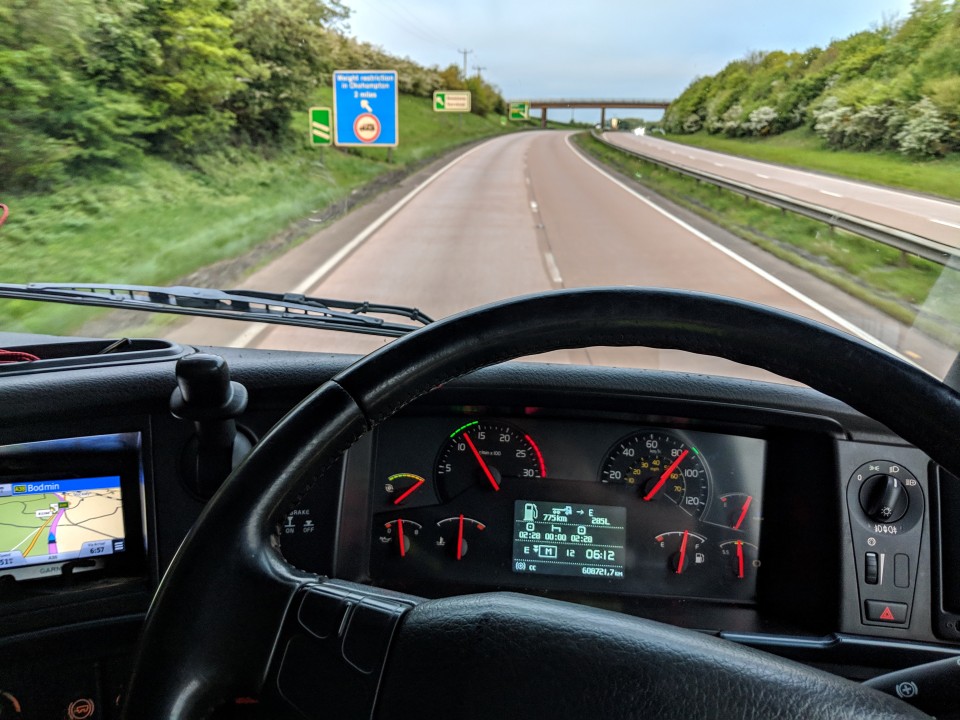
Susie Jones
Улесняване на правилата за тахографите
Създаден: 01.08.2024
•
Актуализирано: 08.08.2024
Светът на правилата за тахографите може да бъде объркващ и за най-опитния шофьор на камион. Да не говорим за всеки, който тепърва навлиза в бранша. Целта ни е да изясним част от това объркване.
Какво представлява тахографът и защо го използваме?
Според тълковния речник тахографът е "устройство, което се поставя в превозни средства като камиони и автобуси, за да записва информация, като например колко бързо се движи превозното средство, какво разстояние изминава и колко почивки прави водачът".
Целта на тахографа е да предотврати умората на водача и да гарантира, че водачите и работодателите спазват правилата. Благотворителната организация за пътна безопасност Brake съобщи, че "четири от десет катастрофи, свързани с умората, са свързани с лице, управляващо търговски автомобил". Ето защо правилата за тахографите играят важна роля в стремежа за намаляване на този брой.
Кога ви е необходим тахограф?
Трябва да монтирате тахограф, ако брутното тегло на превозното средство надхвърля три тона и половина. Важно е да запомните, че това включва и тегленето на ремарке. Съществуват няколко изключения от това правило:
Ако шофирате само по обществени пътища
Ако превозното средство се управлява от въоръжени сили, полиция или пожарна команда
Ако сте търговски автопарк и използвате превозни средства с максимална маса седем тона и половина, а пътуването ви е на по-малко от 100 км от оперативната ви база.
Ако превозвате стоки и автомобилът ви е електрически
Ако превозвате оборудване или машини за нуждите на водача и управлението на това превозно средство не е основната ви работа.
Какви са различните видове тахографи?
Съществуват три различни вида тахографи:
Аналог: Те са задължителни в Европа от 1986 г. Аналоговите тахографи използват листове от восъчна хартия за записване на данните на водача. Водачите въвеждат данните ръчно и ги вкарват в тахографското устройство.
Дигитални: Те бяха въведени през 2006 г. Използват се от повече от един милион транспортни компании и над шест милиона професионални шофьори. Цифровите тахографи записват данните на водача върху вътрешно устройство за съхранение и карта на водача.
Smart: От юни 2019 г. Европейският съюз изисква от компаниите да използват интелигентни тахографи. Те автоматично записват местоположението на превозното средство в началото и в края на всяко пътуване. Те също така предоставят актуализации на всеки три часа
Какво означава всеки символ на тахографа?
Вижте нашето видео, в което се обяснява всеки символ на тахографа.
Нарушаване на правилата
За безопасността на шофьора на камион и на всички останали участници в движението трябва да се спазват правилата за почивка. Разгледахме основните точки.
Време за шофиране:
- Не може да бъде по-дълго от четири часа и половина преди почивката
Прекъсвания:
- Трябва да са поне 45 минути, освен ако водачът не ползва почивка
Период на почивка:
- По време на периода на почивка не може да се извършва шофиране или друга работа.
Разделяне на почивките:
Пълна 45-минутна почивка може да бъде разделена на 15-минутна почивка, последвана от 30-минутна.
Почивките за разделяне трябва да се разпределят по време на четири часа и половина шофиране
Според правилата на ЕС, ако почивката е разделена, втората почивка трябва да е поне 30 минути.

Дневно ограничение за шофиране
Дневният лимит за шофиране се отнася до максималното време за шофиране в рамките на един ден. Максималният брой е девет часа, но той може да бъде увеличен до 10 часа. Това обаче не може да се прави повече от два пъти в рамките на една определена седмица. Дневното време за шофиране може да се определи като:
Общото натрупано време на управление между края на дневния период на почивка и началото на следващия дневен период на почивка
Общото натрупано време на шофиране между дневния период на почивка и седмичния период на почивка. .
Седмичен и двуседмичен лимит за шофиране
Шофьорите трябва да се уверят, че не превишават максималните седмични и двуседмични ограничения за шофиране.
Максималният седмичен лимит за шофиране е 56 часа (важи за фиксирана седмица)
Определената седмица започва в 00.00 ч. и приключва в 24.00 ч. на следващата неделя
Двуседмичното ограничение за шофиране е 90 часа.
Ежедневна почивка
Освен това трябва да се прави ежедневна почивка.
Шофьорът трябва да ползва 11 часа непрекъсната почивка. Този брой може да бъде намален на девет
Това намаление може да се случи само до три пъти между седмичните периоди на почивка.
Периодът на почивка трябва да бъде завършен в рамките на 24 часа след края на последния дневен или седмичен период на почивка.
Ежедневната почивка може да се извършва в автомобила, но е необходимо да имате подходящи места за спане. Ако такива липсват, водачът трябва да намери място за настаняване. Вижте нашата страница местоположения, за да разберете кои спирки за камиони предлагат тази услуга.
Седмична почивка
Седмичните почивки трябва да се ползват не по-късно от края на шест последователни 24-часови периода от края на последната седмична почивка.
От водачите се изисква да почиват поне 45 часа.
Те могат да ползват намалена седмична почивка от поне 24 часа.
Намалената седмична почивка трябва да бъде компенсирана с един блок и най-малко девет часа преди края на третата седмица.
Въпреки че може да се ползва намалена почивка, трябва да се отбележи, че в две последователни седмици, в които е ползвана намалена почивка, едната трябва да е 45 часа.

Множествен състав
Някои шофьори могат да качат на борда друг шофьор. Ползите от това са повишена производителност, по-голям пробег и по-дълго време на шофиране.
И двамата водачи трябва да ползват девет часа дневна почивка
Тази дневна почивка трябва да се ползва в рамките на 30 часа, а не на 24.
Първият час на многофункционално управление не изисква друг шофьор. След един час той става задължителен.
Преминаване с ферибот или пътуване с влак
Както е посочено по-горе, редовната дневна почивка на водача трябва да бъде 11 часа непрекъснато, но има няколко изключения от това правило. При условие че превозното средство се придружава от водача; дневната почивка може да бъде прекъсната два пъти, но не трябва да надвишава общо един час. Например, качване и слизане от фериботи и влакове.
Ако редовната дневна почивка е прекъсната по този начин, натрупаният период на почивка трябва да бъде най-малко 11 часа или 12 часа, ако е разделен.
Какво е правилото за едноминутен тахограф?
Правилото за една минута влезе в сила през октомври 2011 г. То се отнася до по-старо законодателство, което подробно определяше, че минута с поне пет секунди шофиране трябва да се регистрира като време на шофиране. Въпреки това ЕС промени това законодателство, така че най-дългата непрекъсната дейност, извършена в рамките на една минута, ще бъде регистрирана за тази конкретна дейност.
Какво ще се случи, ако не спазвам правилата на тахографа?
Неспазването на правилата за тахографите може да доведе до глоби, а понякога и до лишаване от свобода. Като цяло наказанието зависи от тежестта на нарушението. Повечето нарушения на тахографските правила се разглеждат с фиксирани санкции. Шофьорите имат на разположение до 28 дни, за да разгледат фиксираните наказания.
В Обединеното кралство има два вида глоби и санкции.
Глоби от четвърто ниво: максималният размер на тези глоби е 2 500 GBP; този максимален размер се отнася за всяка глоба за тахограф. В случаи на многобройни нарушения от четвърто ниво обаче може да бъде наложена максимална глоба за всяко нарушение.
Глоби от пето ниво: максималният размер на тези глоби е 5000 GBP, но както и при глобите от четвърто ниво, в случаите на множество нарушения може да бъде наложена максималната глоба.
Правилата за тахографите могат да бъдат трудни за разбиране. Неспазването им обаче може да доведе до проблеми с безопасността и потенциални глоби. Като разбират и спазват правилата, автопарковете и шофьорите могат да управляват своите превозни средства безопасно и законно. Изключително важно е да се отбележи, че правилата и разпоредбите за тахографите могат да се различават в отделните държави.



